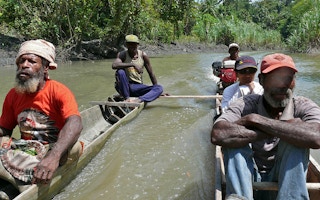The World Bank’s Enabling the Business of Agriculture (EBA) project, launched in 2013, has sought agricultural reforms favouring the corporate sector. EBA was initially established to support the New Alliance for Food Security and Nutrition, initiated by the G8 to promote private agricultural development in Africa.
The New Alliance has been touted as “a new model of partnership” for agricultural transformation in Africa. The Bank has used the EBA to address the land issue in developing countries, particularly in Africa. The effort is strongly supported by the US and UK governments as well as the Gates Foundation, all strong proponents of corporate agriculture.
Emulating the influential annual World Bank Doing Business report, the EBA scores countries on the ease of doing business in agriculture. It purports to measure ‘legal barriers’ to agribusiness and to prescribe reforms in twelve areas, including seeds, fertilisers, trade and machinery.
It advocates reforms in favour of agribusiness. For example, governments should weaken regulations over seeds, fertilisers and pesticides and strengthen foreign agribusiness power and influence. Missing from the partnership are peasants and indigenous peoples whose livelihoods depend on traditional land uses.
Dangerous new indicator
The 2017 EBA report proposed a new indicator on land. Introduced as a pilot for 38 countries, the land indicator is expected to be extended to more countries in the 2019 EBA report. The Bank claims to be seeking to better protect land rights and to ensure more equity in land access.
EBA best practices point to a very different agenda based on promoting large-scale industrial agriculture at the expense of family farmers, pastoralists and indigenous peoples. It is biased towards industrial agriculture and agribusiness, and the intent of the new indicator makes it even more urgent to challenge the EBA initiative.
The EBA advocates certain reforms and policy measures, raising concerns about its likely impact, if implemented by governments. To enhance land use productivity, the Bank advocates formalising (private) property rights, easing the sale and lease of land for commercial use, land expropriation and public land auctions.
UNCTAD’s 2009 World Investment Report cautioned that “Greater involvement by TNCs will not automatically lead to greater productivity in agriculture, rural development or the alleviation of poverty and hunger”.
Even joint research by World Bank and IFPRI staff is circumspect about the claimed benefits of large scale commercial farming in light of likely environmental, social and productivity impacts. Large scale commercial farming has often involved environmental degradation, forced evictions and human rights violations, worsening food insecurity and livelihood destruction.
“
EBA best practices point to a very different agenda based on promoting large-scale industrial agriculture at the expense of family farmers, pastoralists and indigenous peoples.
Legal land grabbing
Since the turn of the century, large-scale land acquisitions by transnational corporations (TNCs) in developing countries, especially in sub-Saharan Africa, have accelerated. Such land targeted by ‘investors’ has often long been used by local people who may not have property titles, often deemed unnecessary.
Land use practices have often evolved with changing demography, ecology, knowledge and technology. Legally, such land may be deemed either public or state land, and/or land to which local communities claim customary rights.
Unsurprisingly, such land grabs have encountered resistance from many opposing expropriation of their land. Some have been successful in delaying, disrupting or blocking new plantations, large farms and ranches.
Enabling land privatisation
Much public land in developing countries is used in line with customary practices. Communally managed natural resources—water, forests, grazing land—are generally recognised as essential for sustaining the livelihoods of hundreds of millions of rural poor.
In customary law, land is typically valued as a shared inherited resource, often with deep social and cultural significance. Ignoring this, the Bank is urging governments to privatise public land with ‘potential economic value’ for commercial use, so that it can be put to its ‘best use’.
The Bank has been promoting the formalisation of private land ownership to encourage agribusiness investments in capital-intensive agriculture, to increase productivity. Commodifying land will enable more capital-intensive agricultural production as the Bank believes that “undocumented [land] rights pose challenges and risks to investors”.
By scoring countries in terms of ease of accessing land for agribusiness, the new EBA land indicator seeks to accelerate land privatisation and to facilitate corporate access to land in developing countries. By enhancing property rights and making land a ‘transferable asset’, its use as collateral for credit is also enhanced.
Marginalising rural poor
The Bank strategy either ignores or seeks to take advantage of the considerable vulnerability of many family farmers, worsened as the land they depend on for their livelihoods becomes a tradable asset.
The development of land markets increases commercial pressure on land, destroying the livelihoods of many depending on land and the commons—grazing and fishing grounds, and forests.
By promoting land as a marketable commodity, the land indicator inevitably enables greater concentration of land ownership. In economies with ‘formal’ land tenure systems, farmers often lose their land to creditors.
Spreading such property rights will legally facilitate land dispossession, concentration and grabbing. While jobs may be created for some locals, many more may be marginalised without much hope for alternative livelihoods elsewhere.
Thus, facilitating corporate agriculture by concentrating control over land use is likely to exacerbate rural poverty and overall inequality. Land titling, purportedly to protect land users from eviction, thus accelerates dispossession of current land users. Hence, the EBA should be ditched.
Instead, governments should be helped to design food and agriculture policies that empower family farmers, pastoralists and indigenous peoples to address the major challenges of poverty, hunger, malnutrition, environmental degradation, resource depletion and climate change.
Jomo Kwame Sundaram was Assistant Director-General for Economic and Social Development, Food and Agriculture Organisation. Anis Chowdhury is Adjunct Professor at Western Sydney University & University of New South Wales. This article was republished with permission from Inter Press Service.










